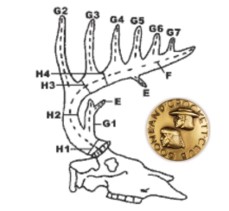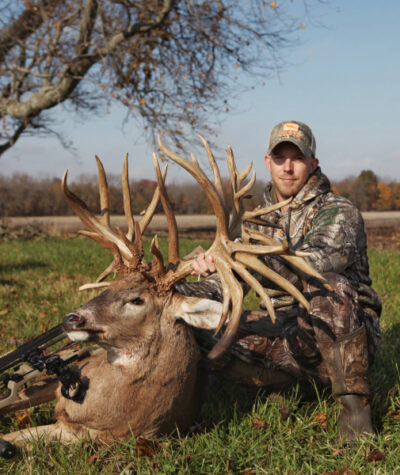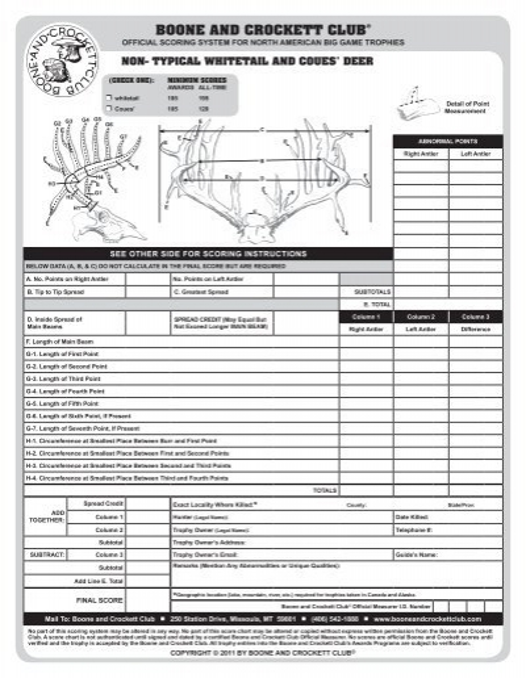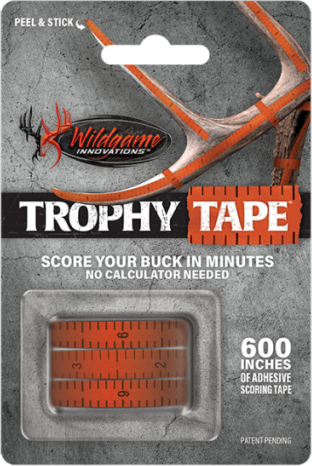How to Measure a Whitetail Using the Boone and Crockett Score
I added up the scribbled numbers on the weathered notepad and finally came to a total of 137 3/8. I gazed upon what was a beautiful specimen of a central Texas 9-pointer. My counterpart (and hunting buddy) then proclaimed, “he’s probably barely 130-inches net”. As usual, I could only think, “who cares”?
Boone & Crockett Scoring
Some hunters claim to care nothing about the Boone and Crockett (B&C) antler score. While some mean it, many change their mind the minute they shoot a particularly large-antlered buck. I’ve been scoring deer for years. I’m not the best at it nor the worst. Like many, I hardly ever even consider the net score. Of course, it does have its place, especially when it comes to the record books.
Whether you genuinely care about buck scores or not, there is value in knowing how to do a gross (or even rough) B&C score. After all, at a minimum, it’s a benchmark and helps when gauging and describing both live and harvested bucks. Secondly, though it has little to do with the quality of the buck (in my humble opinion), it also can be helpful for goal-setting and herd management. Finally, it can even be a check and balance on that exaggerating hunting buddy we all have.
Here is a scenario; You see a huge whitetail buck on the far edge of a grain field. You call your buddy to tell him about it, and it usually goes something like this – “I just saw a brute! He was 160-inches if he was an inch”. Sound familiar? I bet so.
To arrive at a “net score,” deductions would have to be made to account for differences in the symmetry between the tines on each main beam. In day-to-day casual hunting conversation, however, most hunters are referring to gross score.
But what does this mean? It’s pretty straightforward. In this context, it’s a point of reference for a buck’s antlers made via an estimated gross B&C score (of 160-Inches), a would-be total stemming from a combination of antler measurements (antler length, mass, and spread).
There are differing opinions on gross vs. net score with proponents of the former proclaiming, “a buck should get credit for every inch of antler he has” or “deductions are for accountants.” Herein lies the utility of a gross antler score. Though there are other gross score calculations like the Buckmasters Trophy Records (BTR) score, the gross B&C tally remains the most popular.
Whatever mindset you have, here is a basic overview of how to compute the gross B&C score (record books aside). Practice as often as you can, and you will gain speed and confidence each time you stretch the tape.
How to Compute the Gross B&C Score
In its most basic sense, B&C Gross Score for antlered animals is the typical frame, without deductions for lack of symmetry, plus the total of the lengths of all the abnormal points. B&C Gross Score for horned and tusked animals is the total of the left and right sides without deductions for lack of symmetry. This article refers to gross scores for whitetail deer.
First off, you need the antlers (preferably still attached to the skull plate). The only tools required are a flexible measuring tape and a pad or score sheet for recording the measurements (to the nearest 1/8th-inch).
Measure the Main Beams of the Antlers
This measurement is taken on the outside edge of each of the two main beams. Starting at the base, follow the outside and center of the main beam to the antler tip. Record both measurements.
Measure the Inside Spread of the Main Beams
The inside spread will be the greatest distance between the main beams. (B&C Spread Credit). Note that if the spread is longer than the longest of the two main beams, the longest beam measurement is used. Record the measurement.
Take the “G” (Tine) Measurements
These measurements will be numbered for each tine and will start with a G. On a typical whitetail buck; the G1 is the brow tine (the tine closest to the burr). Moving away (out) from the skull, the G2 is usually the next tine (followed by the G3, etc.). The last antler point before the main beam tip is the last G measurement you will register. Measure the tines by marking a horizontal line from the top of the main beam to the tip of the tine. Record measurements for each tine.
Take the “H” (Circumference) Measurements
Often referred to as antler mass, the H1 measurement will be the smallest circumference between the burr and the first point. The H2, the smallest between the first point and the second point. Continue these measurements until you have recorded four measurements per side of the antlers. If there is no G4 tine present, the H4 will be measured at the halfway point between the G3 and the main beam tip. Record the measurements.
Measure all Abnormal Points
Though treated as deductions for a net score, abnormal points count toward the gross score of the antlers. Abnormal point must be at least an inch in length. Measure all abnormal points and record.
Calculating the Final Gross Score of a Whitetail Buck
Either with the Boone and Crockett worksheet or on a pad of paper, add up the following to reach your gross score:
- Two Main Beam Measurements
- Inside Spread Credit
- “G” (Tine) Measurements
- “H” (Circumference) Measurements
If we were taking deductions to arrive at a net score, the net B&C totals necessary for record book entry are 170-inches (typical rack) and 195-inches (non-typical rack). Similarly, the necessary P&Y score (archery) is a net 125-inches. In this case, these thresholds are only for reference, a benchmark to consider when evaluating a buck’s antlers.
Note that a typical set of antlers is normal, with a symmetrical array of points. Conversely, non-typical antlers are those with points non-typical in location (coming from a point or the bottom or sides of the main beam) or additional ones outside the customary pattern of points. See below.
What’s in a number? Now that you know the basics, extend the tape on the buck you hopefully harvested this past season. For that matter, practice scoring old antlers. Whether score is important to you or not, it’s a fun and rewarding skill, as well as a useful yardstick.
Useful Tools
You can download a worksheet (like the one below) from the Boone & Crockett Club that will aid in calculating your buck’s score.
Based in Texas, Jerald Kopp is President of 1st Light Hunting Journal. His articles cover a variety of topics about hunting and the outdoor lifestyle. Jerald is an avid outdoorsman with deer hunting and whitetails being by far his greatest passion. He was introduced to hunting and fishing at an early age and has been enjoying it for 40+ years. In 2005, he established the Empowerment Outfitter Network (EON) – a faith-based non-profit organization that provides hunting opportunities for disabled and terminally-ill children and youth. When not hunting, he spends his time traveling and enjoying life with Amy, his wife of over 30 years. Jerald and Amy have two adult daughters and a son-in-law.







